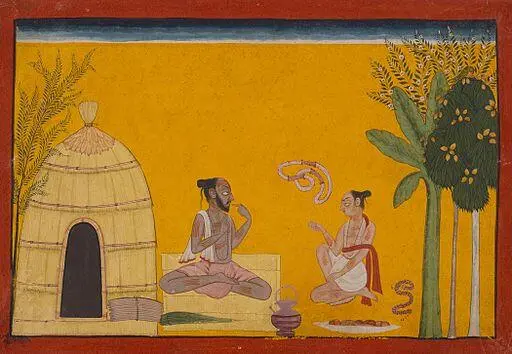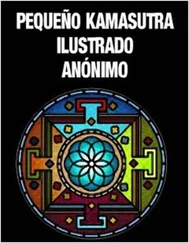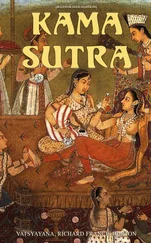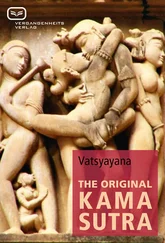Vatsyayana, Richard Francis Burton
Published by

Books
- Advanced Digital Solutions & High-Quality eBook Formatting -
musaicumbooks@okpublishing.info
2021 OK Publishing
EAN 4066338113948
Preface
Introduction
Part I. The Vatsyayana Sutra. Introductory Preface. Salutation to Dharma, Artha and Kama
Chapter II. On the Acquisition of Dharma, Artha and Kama
Chapter III. On the Arts and Sciences to Be Studied
Chapter IV. The Life of a Citizen
Chapter V. About the Kinds of Women Resorted to by the Citizens, and of Friends and Messengers
Part II. Of Sexual Union
Chapter I. Kinds of Sexual Union According To
Chapter II. Of the Embrace
Chapter III. On Kissing
Chapter IV. On Pressing, or Marking, or Scratching With the Nails
Chapter V. On Biting, and the Means to Be Employed With Regard to Women of Different Countries
Chapter VI. Of the Different Ways of Lying Down, and Various Kinds of Congress
Chapter VII. Of the Various Modes of Striking, and of the Sounds Appropriate to Them
Chapter VIII. About Women Acting the Part of a Man; And of the Work of a Man
Chapter IX. Of the Auparishtaka19b or Mouth Congress.
Chapter X. Of the Way How to Begin and How to End the Congress. Different Kinds of Congress and Love Quarrels
Part III. About the Acquisition of a Wife
Chapter I. On Marriage
Chapter II. Of Creating Confidence in the Girl
Chapter III. On Courtship, and the Manifestation of the Feelings by Outward Signs and Deeds
Chapter IV. About Things to Be Done Only by the Man, and the Acquisition of the Girl Thereby. Also What Is to Be Done by a Girl to Gain Over a Man, and Subject Him to Her
Chapter V. On Certain Forms of Marriage
Part IV. About a Wife
Chapter I. On the Manner of Living of a Virtuous Woman, and of Her Behaviour During the Absence of Her Husband
Chapter II. On the Conduct of the Elder Wife Towards the Other Wives of Her Husband, and on That of a Younger Wife Towards the Elder Ones. Also on the Conduct of a Virgin Widow Re-Married; Of a Wife Disliked by Her Husband; Of the Women in the King's Harem; And Lastly on the Conduct of a Husband Towards Many Wives
Part V. About the Wives of Other Men
Chapter I. Of the Characteristics of Men and Women.—the Reasons Why Women Reject the Addresses of Men.—about Men Who Have Success With Women, and About Women Who Are Easily Gained Over
Chapter II. About Making Acquaintance With the Woman, and of the Efforts to Gain Her Over
Chapter III. Examination of the State of a Woman's Mind
Chapter IV. About the Business of a Go-Between
Chapter V. About the Love of Persons in Authority for the Wives of Other Men
Chapter VI. About the Women of the Royal Harem; And of the Keeping of One's Own Wife
Part VI. About Courtesans
Introductory Remarks
Chapter I. Of the Causes of a Courtesan Resorting to Men; Of the Means of Attaching to Herself the Man Desired; And of the Kind of Man That It Is Desirable to Be Acquainted With
Chapter II. Of Living Like a Wife
Chapter III. Of the Means of Getting Money. Of the Signs of the Change of a Lover's Feelings, and of the Way to Get Rid of Him
Chapter IV. About Re-Union With a Former Lover
Chapter V. Of Different Kinds of Gain
Chapter VI. Of Gains and Losses; Attendant Gains and Losses; And Doubts; As Also of the Different Kinds of Courtesans
Part VII. About the Means of Attracting Others to Yourself
Chapter I. On Personal Adornment; On Subjugating the Hearts of Others; And on Tonic Medicines
Chapter II. Of the Ways of Exciting Desire, and Miscellaneous Experiments, and Recipes
Concluding Remarks

DEDICATED
TO THAT SMALL PORTION OF THE BRITISH PUBLIC
WHICH TAKES ENLIGHTENED INTEREST IN
STUDYING THE MANNERS AND CUSTOMS
OF THE OLDEN EAST.
Table of Contents
In the literature of all countries there will be found a certain number of works treating especially of love. Everywhere the subject is dealt with differently, and from various points of view. In the present publication it is proposed to give a complete translation of what is considered the standard work on love in Sanscrit literature, and which is called the 'Vatsyayana Kama Sutra,' or Aphorisms on Love, by Vatsyayana.
While the introduction will bear with the evidence concerning the date of the writing, and the commentaries written upon it, the chapters following the introduction will give a translation of the work itself. It is, however, advisable to furnish here a brief analysis of works of the same nature, prepared by authors who lived and wrote years after Vatsya had passed away, but who still considered him as a great authority, and always quoted him as the chief guide to Hindoo erotic literature.

Besides the treatise of Vatsyayana the following works on the same subject are procurable in India:—
1 The Ratirahasya, or secrets of love.
2 The Panchasakya, or the five arrows.
3 The Smara Pradipa, or the light of love.
4 The Ratimanjari, or the garland of love.
5 The Rasmanjari, or the sprout of love.
6 The Anunga Runga, or the stage of love; also called Kamaledhiplava, or a boat in the ocean of love.
The author of the 'Secrets of Love' (No. 1) was a poet named Kukkoka. He composed his work to please one Venudutta, who was perhaps a king. When writing his own name at the end of each chapter he calls himself "Siddha patiya pandita," i.e. , an ingenious man among learned men. The work was translated into Hindi years ago, and in this the author's name was written as Koka. And as the same name crept into all the translations into other languages in India, the book became generally known, and the subject was popularly called Koka Shastra, or doctrines of Koka, which is identical with the Kama Shastra, or doctrines of love, and the words Koka Shastra and Kama Shastra are used indiscriminately.
The work contains nearly eight hundred verses, and is divided into ten chapters, which are called Pachivedas. Some of the things treated of in this work are not to be found in the Vatsyayana, such as the four classes of women, viz., the Padmini, Chitrini, Shankini and Hastini, as also the enumeration of the days and hours on which the women of the different classes become subject to love. The author adds that he wrote these things from the opinions of Gonikaputra and Nandikeshwara, both of whom are mentioned by Vatsyayana, but their works are not now extant. It is difficult to give any approximate idea as to the year in which the work was composed. It is only to be presumed that it was written after that of Vatsyayana, and previous to the other works on this subject that are still extant. Vatsyayana gives the names of ten authors on the subject, all of whose works he had consulted, but none of which are extant, and does not mention this one. This would tend to show that Kukkoka wrote after Vatsya, otherwise Vatsya would assuredly have mentioned him as an author in this branch of literature along with the others.
The author of the 'Five Arrows' (No. 2 in the list) was one Jyotirisha. He is called the chief ornament of poets, the treasure of the sixty-four arts, and the best teacher of the rules of music. He says that he composed the work after reflecting on the aphorisms of love as revealed by the gods, and studying the opinions of Gonikaputra, Muladeva, Babhravya, Ramtideva, Nundikeshwara and Kshemandra. It is impossible to say whether he had perused all the works of these authors, or had only heard about them; anyhow, none of them appear to be in existence now. This work contains nearly six hundred verses, and is divided into five chapters, called Sayakas or Arrows.
Читать дальше















